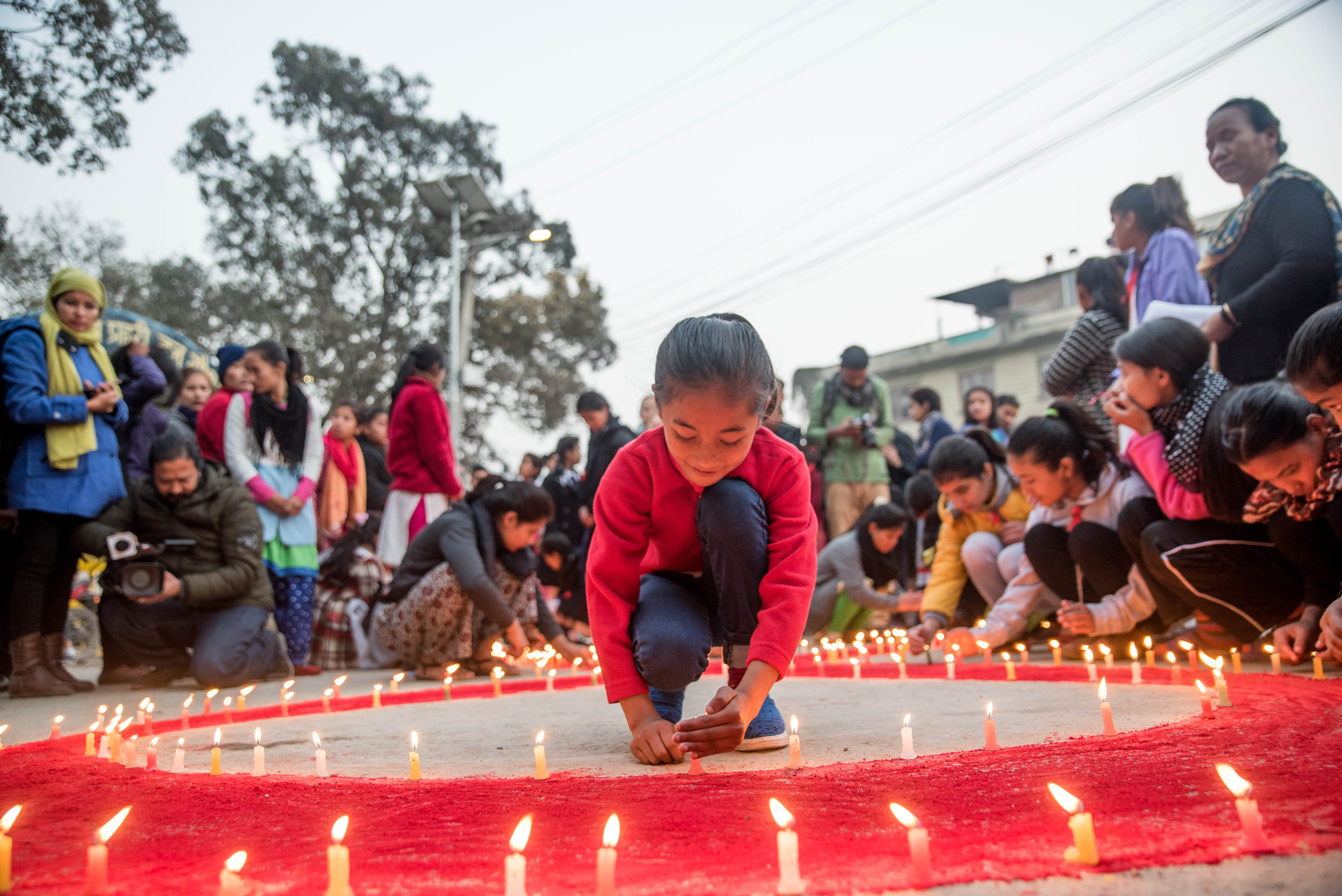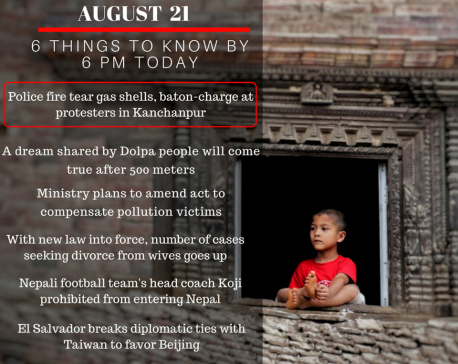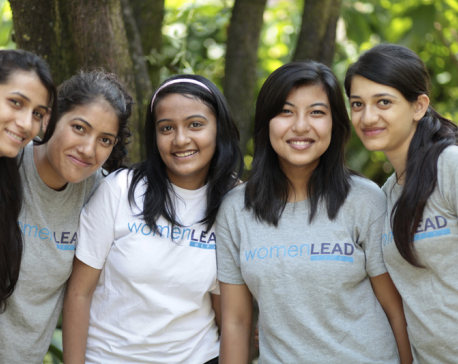
OR
30th World HIV/AIDS Day
HIV/AIDS declining in Nepal
Published On: December 1, 2017 05:23 PM NPT By: Pratik Rimal | @@eyes_8miles

KATHMANDU, Dec 1 : It was in 2002 that my school invited two individuals with HIV positive to educate us on HIV/AIDS and the stigma it carried. We were told that AIDS wasn’t transmitted by hugs and handshakes; the mere presence of actually seeing people with HIV positive was ‘frightful’. Everyone maintained distance. By the end of the interaction, I shook hands with one of the HIV positive guests. I told about the incident to my family and everyone was surprised by my action that day.
In Nepal, one of the first cases of HIV was reported in 1988. By 2003, the number skyrocketed to 7,500, according to annual report of the Department of Health Science. Over the decade that followed, new cases of HIV/AIDS reduced significantly; down to 1,331 in 2015, an 82% reduction. It is estimated that around 32,735 people (12,503 women) live with HIV/AIDS in Nepal and 1,197 children between the ages 0-14. Around 1,700 people died of AIDS related causes in 2016, according to a statement released by UNID-Nepal. According to the National Centre for AIDS and STD Control, around 2,263 people die of AIDS in Nepal every year.
“The Government aims to reduce zero infections among children and 90% of women and men, especially among young people and those living in high prevalence setting. It also aims to ensure access to combination of undertakings and commodities to prevent HIV, including sexual and reproductive health services,” Dr. Senendra Raj Uprety, former health secretary, said.
Government policy and response
The Government of Nepal has brought policies, programmes and strategies to mitigate the HIV/AIDS epidemic. The Nepal Health Sector Programme — NHSP-2 (2010-2015)--embraced a plan to halt or reverse the HIV prevalence, and committed to scaling up HIV-related interventions under essential health care package within the broader framework of communicable diseases.
The National HIV Strategic Plan (2016-2021) aims to meet the global 90-90-90 goal by 2020. “This means, 90 per cent of people living with HIV know their HIV status, 90 per cent of people who know their HIV status are accessing Anti Retroviral Therapy and 90 per cent of people on treatment have suppressed viral loads by 2020,” Bir Bahadur Rawal, information officer at the National Centre for AIDS and STD Control, said.
Challenges ahead
Unsafe sexual behavior continues to be one of the major causes of HIV infection in Nepal. Dr. Khem B. Karki said that HIV programmes have been targeted to sex workers and their clients and migrant workers.
“We have so far only targeted youth who have HIV/AIDS, leaving a large chunk of the population vulnerable to the disease,” he said. As of July 2017, HIV infection was highest at 72.6% among 25-49, followed by 11.5 per cent among 20-24 years.
The government is focused on curative measures, but a lot more needs to be done on preventive measures in order to change behaviors. These include sex education at schools and opening up on sex related discussions. “Parents and teachers must come out of their cocoon and discuss the subject,” Karki said. As the country heads into elections on December 7, Karki’s concerns lie on how local governments will tackle diseases, including AIDS. “We must strengthen local government and health systems to address AIDS.”
Financing the treatment
Financing the HIV response in Nepal relies heavily on external funding. As such support declines rapidly, it is crucial that public-private partnerships are established and maintained. “In the present fiscal year, donors and government have jointly spent 9.3 billion rupees, of which the majority is spent on free anti-retroviral therapy medicines,” Rawal said.
“The government is well able to fund to provide free treatment. We just need proper planning,” Karki said.
You May Like This

Aug 21: 6 things to know by 6 PM
Your daily dose of missed important news of the day. ... Read More...

Outreach Nepal lifts Nepal Ice AAN Futsal
KATHMANDU, May 13: Outreach Nepal has lifted the first ever Nepal Ice AAN Futsal Tournament 2018 defeating Media Basket by a... Read More...

Helping women re-envision a better Nepal: Women LEAD Nepal
KATHMANDU,March 7: Women LEAD Nepal started as an idea that women and girls could change the trajectory of Nepal’s future and... Read More...





Just In
- Nepalgunj ICP handed over to Nepal, to come into operation from May 8
- Nepal to gift two elephants to Qatar during Emir's state visit
- NUP Chair Shrestha: Resham Chaudhary, convicted in Tikapur murder case, ineligible for party membership
- Dr Ram Kantha Makaju Shrestha: A visionary leader transforming healthcare in Nepal
- Let us present practical projects, not 'wish list': PM Dahal
- President Paudel requests Emir of Qatar to initiate release of Bipin Joshi
- Emir of Qatar and President Paudel hold discussions at Sheetal Niwas
- Devi Khadka: The champion of sexual violence victims



_20240423174443.jpg)










Leave A Comment